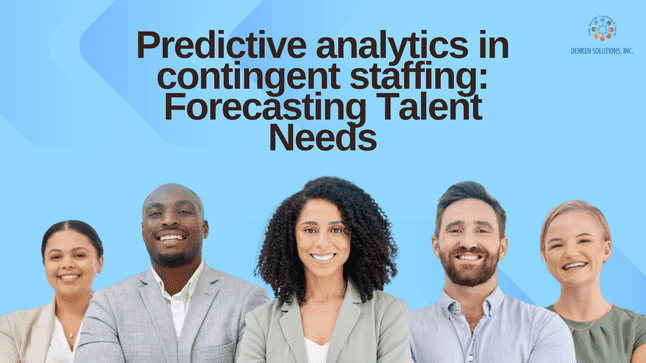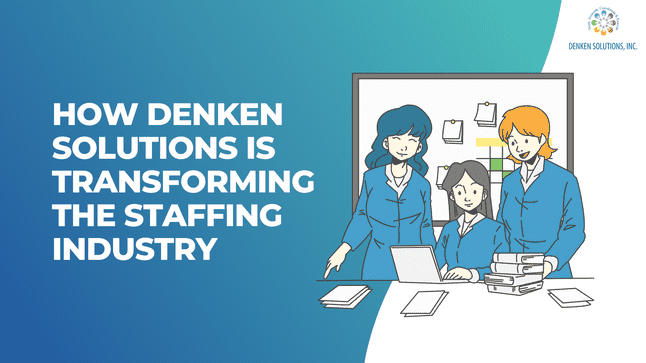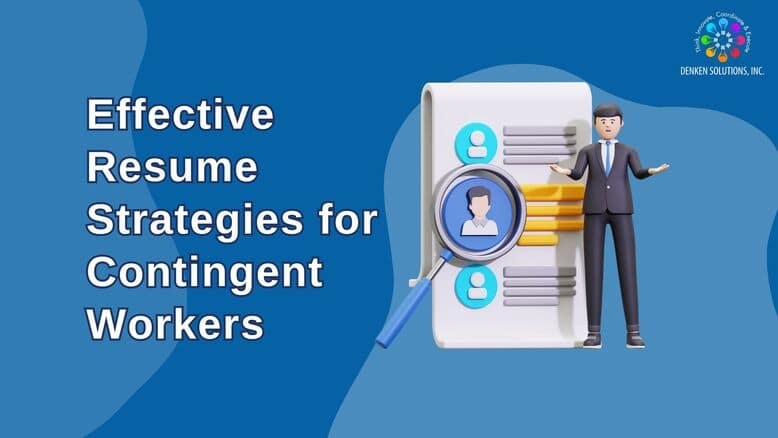The power of predictive analytics in strategic workforce planning
The capacity to foresee and prepare for future requirements is more important than ever in the quickly evolving corporate environment of today. This is especially true in human resources, where a poor hire can have a significant negative impact on team chemistry and corporate culture in addition to financial costs. Predictive analytics is a game-changing technique that turns hiring from a reactive to a data-driven, purposeful process.
Using data, statistical algorithms, and machine learning methods, predictive analytics makes predictions about the future based on past performance. It presents the alluring prospect of being able to predict hiring requirements, find the best applicants, and eventually maximize workforce planning in the hiring context.
What is predictive analytics?
One type of advanced analytics is predictive analytics, which forecasts activity, behavior, and trends using data. In a variety of sectors, including marketing, finance, healthcare, and retail, it is an essential tool.
By looking at data patterns and linkages, predictive analytics helps firms find potential dangers and possibilities. AI, data mining, machine learning, and statistical methods are all used in this process.
Predictive analytics is an advanced field that forecasts future events by combining machine learning, data mining, and statistical analysis. It turns into a potent instrument in the field of human resources, enabling businesses to make better decisions about who to recruit, when to hire, and what attributes to look for in applicants.
Using Data for Predictive Analytics
Using a variety of data sources, predictive analytics in hiring generates precise forecasts of future hiring requirements:
- Historical Hiring Data:
This helps to analyze cycles and patterns in labor demand by providing information on hiring dates, success rates, and employee duration.
- Economic Trends:
Keeping an eye on economic metrics that impact employment markets, like unemployment rates, industry expansion, and recessions, offers valuable information about hiring requirements in general.
- Employee Performance Data:
Businesses may forecast future leadership requirements and determine the traits of successful employees by examining performance reports, productivity data, and career advancement.
What is workforce forecasting?
In order to make sure that an organization has the right people with the right skills at the right time, workforce forecasting is the process of projecting its future staffing needs.
By examining past data, forecasting helps you spot patterns over time and determine when and where your team needs assistance. It can also help align your company’s workforce capacity with its strategic goals.
Demand, scheduling, and workforce management forecasting are important components of workforce forecasting. At the same time, workforce demand forecasting projects future demand for particular positions, skills, or headcount, while workforce management forecasting concentrates on operational aspects of the company, such as scheduling and shift planning. Contingent workforce jobs provide businesses with the flexibility to scale their teams based on project demands while accessing specialized talent without long-term commitments.
The precise and effective allocation of resources and tasks, such as allocating workers to certain schedules or shifts, is known as workforce scheduling. Reducing the number of additional shifts or overtime helps maintain a balance between the supply and demand for the workforce and can help avoid employee burnout.
Importance of workforce forecasting:
By using workforce forecasting, businesses may predict their future labor requirements and prevent significant interruptions to their operations. Management can more efficiently distribute resources to employees in each department by comprehending and projecting staffing needs.
This is essential for strategic workforce planning, effective HR allocation, and minimizing operational slowdowns or interruptions. Work scheduling habits might also harm employees.
Additional significant advantages of workforce forecasting include:
- Aligning staffing levels with long-term business requirements: This guarantees that the appropriate number of employees with the relevant skills are available when needed to support the accomplishment of organizational goals.
- Assisting with long-term growth talent forecasting: More effective resource allocation can eliminate unnecessary hiring and training expenses, increasing cost-effectiveness.
- Avoiding staffing shortages: Organizations can prevent operational disruptions and staffing shortages by effectively forecasting their staffing needs.
- Enhancing job happiness: Efficient workforce forecasting can boost employee engagement, retention, and job satisfaction through improved resource allocation.
- Ensuring legal compliance: By anticipating changes in the workforce that may affect regulatory obligations, accurate workforce forecasting helps reduce legal risks.
How does workforce forecasting work?
Three main elements are included in the workforce forecasting process:
- Data analysis: This method can be used to forecast future labor requirements. To evaluate past staffing patterns and spot skills gaps and turnover trends, use and analyze historical data, market trends, and predictive analytics.
- Technology tools: Software should automate repetitive activities and interact with HR systems whenever feasible. In order to anticipate future problems and requirements, it should also provide simulation, scenario planning, and sophisticated data analysis.
- Collaboration and communication: To help align goals and plans, involve and communicate with key stakeholders and cross-functional teams in your workforce forecasting efforts.
Five steps to forecast the workforce effectively
You can implement the following five workforce forecasting procedures in your company:
Step 1: Evaluate the present personnel
Analyze your current workforce in detail first. This entails assessing the workforce’s size, competencies, responsibilities, and general output. Look for gaps in skills or expertise, and identify areas where extra training or hiring may be necessary.
Maintaining this assessment regularly guarantees that your data is correct and represents the requirements of your company. This process can be streamlined with the help of tools like performance management systems and skills inventories, which will provide you with a clear picture of the strengths and weaknesses of your workforce.
Step 2: Determine your company’s objectives
Forecasting the workforce should be in line with the strategic goals of your business. Start by outlining the long- and short-term objectives of your company, such as entering new markets, introducing new goods, or improving operational effectiveness.
To map out how workforce needs relate to these goals, use strategic planning sessions. Next, set quantifiable Key Performance Indicators (KPIs) to direct your work, such as lowering employee attrition, raising worker productivity, or hitting particular income goals.
Step 3: Estimate demand
Estimate future labor requirements using market trends, historical data, and company growth forecasts. You may better understand how staffing may be impacted by variables, including industry-specific trends, technology improvements, and seasonal demand, by using data analytics tools.
Additionally, collaborate closely with department heads to learn about particular requirements for team sizes, positions, or skill sets. Investigate several future possibilities using scenario planning and predictive analytics, making sure your projection takes into account both the best and worst-case situations.
Step 4: Examine the source
To find any discrepancies between supply and demand, evaluate your talent availability both now and in the future. This entails examining internal talent pools, hiring pipelines, and possible obstacles like departmental high turnover or retirements.
Make sure to take into account economic issues that may affect hiring or retention, such as labor market circumstances and industry competition. Plans for a flexible workforce that include tactics for internal promotions, upskilling, or hiring contingent labor can assist in filling gaps and getting ready for unforeseen circumstances.
Step 5: Create and carry out a strategy
A clear, executable plan that outlines hiring, training, and resource reallocation procedures can help you close the gap between your workforce’s supply and demand. Include activities such as hiring for positions that are difficult to fill, providing opportunities for cross-training, or developing rotating programs to broaden staff skill sets.
Prepare for unforeseen circumstances, such as a sharp rise in demand or a decline in the labor market. Lastly, the strategy should be shared with all teams, and frequent checkpoints should be set up to monitor progress and make necessary modifications.
Conclusion:
As businesses increasingly rely on contingent workforce trends, predictive analytics is revolutionizing how organizations forecast talent needs and optimize their temporary staffing solutions. By leveraging data-driven insights, companies can proactively manage workforce fluctuations, anticipate skill shortages, and improve hiring efficiency.
With the right predictive analytics tools, businesses can move beyond reactive staffing and develop a strategic workforce planning approach that aligns with market demand, project timelines, and budget constraints. As the job market continues to evolve, embracing AI-powered workforce forecasting will be crucial in maintaining agility, cost-effectiveness, and talent quality in the contingent staffing space.



